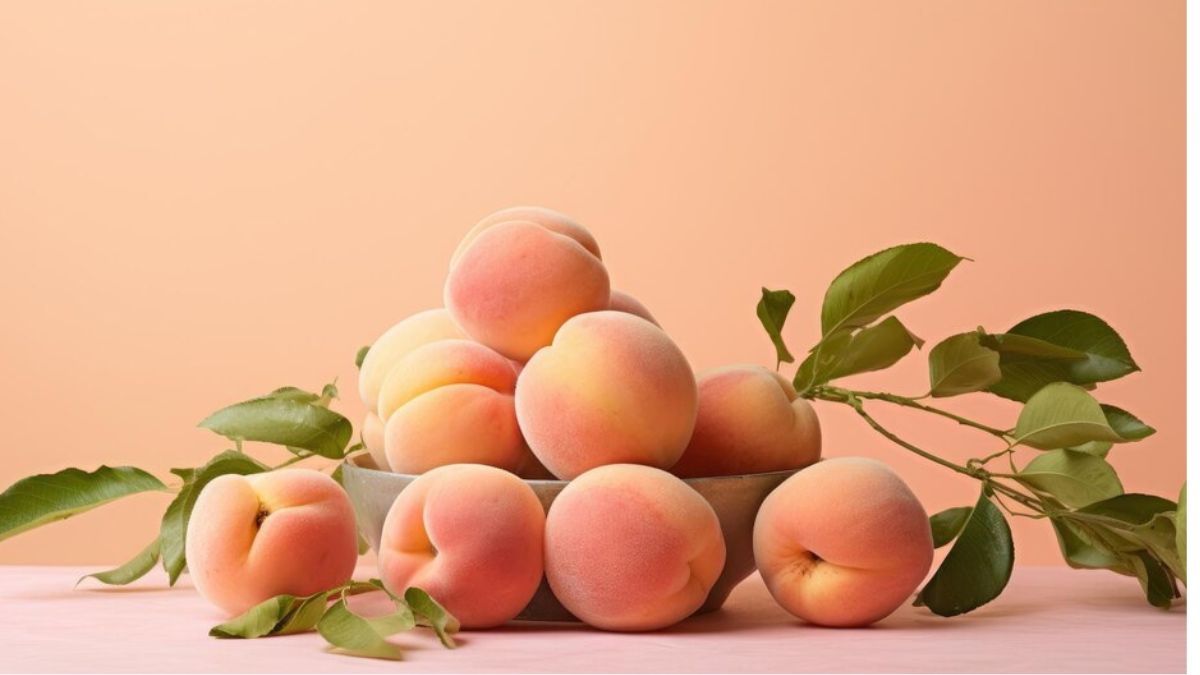FOOD
The Marvelous World of Marille: A Deeper Dive into a Fascinating Fruit

There is a rare jewel among fruits that gets overlooked in favor of more well-known options like apples, oranges, and bananas. The marille is a hero in disguise since it is a delicious and nutritious fruit with a rich history. In this essay, we will go on a quest to discover the marille’s secrets and marvels, including its history, physical traits, culinary applications, and other ways it might improve our lives.
The Origins of Marille
1. A Fruit with Many Names
Marille, or Prunus armeniaca in its scientific name, has a fascinating origin story. This fruit, native to Asia, goes by several distinct names in various regions. Chinese people call it “xing xing,” while Armenians use the term “tsiran.” The vast cultivation and esteem with which this fruit is held throughout civilizations is reflected in the great variety of names for it.
2. Historical Significance
The marille may trace its history back thousands of years. Evidence suggests that it was first grown in China about the year 2000 BC, from where it spread down the Silk Road. In his travels, the well-known Venetian traveler Marco Polo noted the value of marilles.
The Marvelous Characteristics
3. The Appearance
About the size of a golf ball, marilles are tiny, spherical fruits with a bright orange-yellow skin that has a little fuzzy texture. Although their look is sometimes compared to that of a little peach, their flavor is entirely their own.
4. Flavor Explosion
When you slice into a marille, you’ll find juicy, luscious flesh with a delicious balance of sweet and acidic tastes. The complementary flavors of apricot and plum provide a unique sensory experience.
Culinary Delights
5. Fresh and Juicy
Eating marilles straight from the container is one of the easiest ways to enjoy them. Because of their juicy and cool texture, they are the ideal summertime snack. Natural sugars and tartness give you a quick boost of energy and satisfy your thirst at the same time.
6. Marille Jam
Marille jam is a popular condiment throughout most of Europe. The high pectin concentration in the fruit makes it simple to transform into a thick, delicious jam that goes great on toast, croissants, or as a dessert topping like ice cream.
7. Marille in Pastries
Pastries using marilles are a specialty of several bakeries. These fruits bring a blast of flavor and a touch of elegance to many different dishes, from flaky apricot turnovers to rich marille-filled tarts.
The Health Benefits
8. Rich in Nutrients
The nutrients in marilles are incredible. They are an excellent source of dietary fiber, potassium, vitamin A, and vitamin C. These nutrients aid in general health and are necessary for several body processes.
9. Antioxidant Properties
The marille’s rich orange hue is evidence of the high levels of antioxidants, especially beta-carotene, it contains. Having good skin and lowering the risk of chronic illnesses are two areas where antioxidants shine.
Growing Your Own Marille Tree
10. Home Gardening
Planting your own marille tree is a great idea for people with a green thumb and a passion for marilles. These trees can survive in a broad variety of climates, from those with hot summers to those with frigid ones.
11. Care and Maintenance
Marille cultivation at home calls for careful attention to trimming and disease prevention. The joy of picking your own marilles, however, is unparalleled.
Conclusion
In sum, marilles are an exceptional fruit that should get greater acclaim. Marilles have a lot to offer, from their fascinating past to their delicious flavor and beneficial properties. There are several ways to include marille fruit into your life, such as eating them fresh, making jam out of them, baking with them, or even cultivating your very own marille tree.
FAQ’s
1. Can I eat marilles with the skin?
The skin of marilles may be eaten for its high vitamin and fiber content.
2. Are marilles and apricots the same thing?
While marills and apricots do have certain things in common, they are ultimately two separate fruits.
3. Where can I buy marille jam?
You may get marille jam in the jam section of most supermarkets and on the shelves of many online sites, usually labeled as “apricot jam.”
4. How can I tell if a marille is ripe?
A ripe marille will have a pleasant scent and give in just little to moderate pressing.
5. Can I freeze marilles for later use?
Marilles may be stored for a long time in the freezer. They may be stored in airtight containers or freezer bags after being washed, pitted, and frozen.

FOOD
Thanksgiving Pep Talk: Embracing Gratitude and Positivity

Turkey is a holiday celebrated by families with a plethora of festive foods on tables. Holiday tension and difficulties might arise even if they are happy occasions. In order to embrace thankfulness and optimism at this unique time of year, we will examine the idea of a Thanksgiving pep talk in this article.
1. Reflecting on Gratitude
Thinking on the underlying meaning of Thanksgiving, which is gratitude, is crucial as the holiday draws near. If you have family, friends, or achievements of your own, pause to think about what you have to be grateful for. It can be a cozy and encouraging environment when people share their experiences of appreciation.
2. Challenges of the Holiday Season
It is essential to recognize the difficulties that come with the Christmas season. The holidays can be difficult, with demands to manage and family relationships to navigate. We will offer useful advice on how to face these difficulties with poise and fortitude.
3. The Power of Positive Affirmations
This is the Thanksgiving pep talk, a private discussion you have with yourself to raise your overall mood. Learn how to use positive affirmations to create a happy atmosphere for your Thanksgiving party.
4. Crafting Your Pep Talk
Here we will walk you through the process of creating your own motivational talk. Make sure you approach the Christmas season with a good outlook by focusing on self-encouragement and inspiration.
5. Sharing Gratitude Stories
Tell others the tales of your thankfulness. Togetherness and warmth may be fostered at Thanksgiving via the act of community sharing, which can improve everyone’s spirits.
6. Managing Expectations
Preparing for the holidays in a reasonable manner is essential. Appreciate the beauty of genuine, flawed celebrations and learn how to avoid needless stress and pressure.
7. Fun Thanksgiving Traditions
Investigate delightful and significant customs that transcend the typical Thanksgiving and stuffing meal. Make fresh traditions to liven up your Thanksgiving festivities and provide more happiness and meaning.
8. Incorporating Mindfulness
Learn how mindfulness might help lower stress levels over the holidays. Throughout your Thanksgiving celebrations, we’ll offer easy mindfulness activities that can help you feel present and at ease.
9. Expressing Thanks Through Acts of Kindness
Giving back is a significant aspect of Thanksgiving. Discover ideas for giving back that will brighten the holidays and promote kindness in addition.
10. Creating a Support System
The holidays are a critical time to have a support system. Discover advice on creating a nurturing environment and fostering connections with loved ones.
11.Dealing with Disappointment
Admit that it’s normal for there to be disappointments. To assist you get beyond obstacles and concentrate on the good things about Thanksgiving, we’ll discuss coping mechanisms.
12. Gratitude and Well-being
Examine how thankfulness and mental health are related scientifically. Evidence from studies demonstrates the beneficial effects of thankfulness cultivation on one’s general well-being.
13. Celebrating Uniqueness
Celebrate Thanksgiving in a variety of ways. Because every family celebrates the holiday differently, it is truly unique. Honor individuality’s beauty.
14. Conclusion
In closing, let us not forget that thankfulness and optimism are the fundamental components of the Thanksgiving celebration. Focus on the happy times spent with loved ones and accept the shortcomings and individuality that each person possesses.
15. FAQs
1. How can I create a meaningful Thanksgiving pep talk for myself?
Taking stock of your accomplishments, expressing thankfulness, and making resolutions for the next holiday season are all necessary steps in crafting a personal power speech.
2. What are some unique Thanksgiving traditions I can start with my family?
If you’re looking for ways to make your occasion special, consider combining ethnic customs or organizing a gratitude circle in which members of the family express what they have to be glad for.
3. How can I manage holiday stress and avoid feeling overwhelmed during Thanksgiving?
Establish reasonable expectations, assign responsibilities, and give yourself priority. Don’t forget that asking for assistance is OK.
4. Is there scientific evidence supporting the benefits of gratitude on mental well-being?
It is undeniable that an increasing quantity of research demonstrates that there is an association between practicing admiration and enhanced mental health, less stress, and psychological well-being.
5. Where can I find more resources on incorporating mindfulness into my Thanksgiving celebration?
Consider going to local programs that emphasize stress management and mindfulness, or look into mindfulness applications and online resources.
FOOD
Wedding Cake Pool Steps: Adding Elegance to Your Big Day

One of the many details that might be neglected while planning a wedding is selecting the stairs for the pool. The use of wedding cake pool steps has been more common among fashionable couples in recent years, who are seeking to elevate the look of their big day.
1. The Evolution of Pool Steps
Pool stairs used to serve just a practical purpose, facilitating entry and ensuring safety. The need for visually appealing pool elements, however, increased as weddings became increasingly extravagant affairs. As a result, wedding cake pool steps, which blend form and function, came into being.
2. Design Features of Wedding Cake Pool Steps
As a symbolic and aesthetically pleasing addition to any pool, wedding cake pool steps have a distinctive tiered pattern that mimics the tiers of a wedding cake. To guarantee safety without sacrificing elegance, the surfaces are made using non-slip materials. Additionally, these methods are adaptable, so you may use them in pools of all shapes and sizes.
3. Benefits of Choosing Wedding Cake Pool Steps
There are functional benefits to wedding cake pool stairs in addition to their aesthetic value. An exquisite backdrop for wedding pictures, their tiered design will be cherished for years to come. It is crucial that the pool be both functional and easy to use so that the bridal party and their guests may enter and leave the pool with elegance.
4. Choosing the Right Size and Style
The size and design of the stairs leading up to the wedding cake must be carefully considered. Make sure the stairs go with the wedding theme and take the pool’s measurements into account. No matter the scale of your event, from a modest cocktail party to a lavish gala, we have the perfect size and style for you.
5. Installation Process
Methods of Installation You can choose between do-it-yourself tasks and hiring a professional. In the hands of a do-it-yourselfer, installing the stairs may be an exciting task; however, for those who prefer a more streamlined procedure, hiring a professional to install them may guarantee a perfect configuration on the big day.
6. Maintenance Tips
Upkeep is key to keeping wedding cake pool stairs looking beautiful and safe for years to come. Following the manufacturer’s instructions for cleaning and maintenance makes sure the stairs look great for a long time.
7. Cost Considerations
There is a wide range of prices for wedding cake pool steps. The final cost is affected by variables including size, material, and brand. Although you must take your budget into account, the investment will be profitable in the long run due to the aesthetic and practical benefits.
8. Customer Testimonials
First-hand accounts convey a great deal. The wedding cake poolsteps are a popular and well-received choice among couples. The steps are a focal point of the party because of the positive impression they give off to guests.
9. Alternatives to Wedding Cake Pool Steps
Even though wedding cake pool stairs are a common option, it’s always worth looking into other possibilities. A wide range of tastes may be satisfied by a variety of designs and materials. If you shop around, you might discover the pool stairs that are just right for your dream wedding.
10. Tips for Decorating Around Wedding Cake Pool Steps
Your wedding décor will seem more beautiful if you include the steps into it. For a show-stopping centerpiece, try decorating the stairs with candles, flowers, or other ornaments.
11. Personal Touch: Adding Customization
Check out the customization choices for a one-of-a-kind touch. Personalize this unique element to reflect your style by engraving the steps with your wedding date or choosing from a palette of your choosing.
12. Popular Brands and Models
We have wedding cake pool steps from several trusted companies. You may discover the ideal model to suit your pool and wedding needs among these manufacturers’ models, which come with a variety of features.
13. Conclusion
In the chaos of wedding preparations, picking out pool steps could appear insignificant. On the other hand, if you’re looking to add a touch of elegance and romance to your big day, wedding cake pool stairs are a great option to consider. Make an informed choice that will enhance the visual appeal and practicality of your wedding by thinking about both factors.
14. FAQs
1. Are wedding cake pool steps suitable for all pool types?
Indeed, they are made to work with a wide range of pool sizes and forms.
2. Can I install wedding cake pool steps myself?
While it is possible to install it yourself, there is no substitute for a professional.
3. How do I maintain the cleanliness of wedding cakepool steps?
In most cases, all that’s needed is a weekly wash with a gentle soap and water.
4. Do wedding cake poolsteps come in different colors?
Your pool and wedding colors may be coordinated with a wide range of options offered by numerous manufacturers.
5. Are wedding cake pool steps durable in different weather conditions?
Wedding cake poolsteps are often constructed from long-lasting materials that can withstand a range of weather conditions.
FOOD
Italian Hangover Cake: A Culinary Symphony of Flavor

Among the numerous wonderful and varied dishes that Italy is famous for, the Italian hangover cake is one of the most memorable and special desserts. In this essay, we will explore the history, several versions, and cultural influence of this gastronomic delight, taking you on a tour of authentic Italian cuisine.
1. Origin of Italian Hangover Cake
Envision a sweet treat that embodies the spirit and heritage of Italian cuisine. An interesting history enhances the appeal of the Italian hangover cake, which has its origins in the diverse tapestry of Italian cuisine. The tale of the cake’s creation is just as interesting as its flavor, whether it was the result of random chance or a well-planned event.
2. Key Ingredients
Essential ingredients take this culinary marvel to a whole new level of mouth-watering perfection. Making an authentic Italian hangover cake requires nothing less than the highest quality Italian ingredients, and we’ll go over why that’s so important.
3. Recipe Variation #1: Classic Tiramisu Flavor
Those with a penchant for the timeless can have the classic Italian hangover cake with a tiramisu taste. We’ll show you how to make this classic dessert by walking you through each step, and we’ll emphasize the role of coffee-soaked ladyfingers and smooth mascarpone.
4. Recipe Variation #2: Chocolate Lover’s Delight
We can satisfy your cravings for chocolate-infused experiences. Find out about the hangover cake that chocolate lovers enjoy, where the rich cocoa goes well with everything else. If you follow our step-by-step directions, you can make a delicious dessert.
5. Unique Twists and Innovations
Delve into the world of imagination by experimenting with the Italian hangovercake in new and interesting ways. Here you may find a variety of ideas to personalize the hangover cake, from unusual taste combinations to unexpected extras.
6. Pairing Suggestions
We will suggest drinks and appetisers that go well with the Italian hangover cake so that you can fully enjoy its delicious tastes. Learn to maximize your eating experience by combining flavors in the best possible way.
7. The Social Buzz Around Italian Hangover Cake
The Italian hangovercake has become famous in this era of social media. Find ideas for your next baking project by perusing the lively community of foodies who share their creations.
8. Health-conscious Options
We will discuss ways that those who are concerned about their diet may still enjoy the Italian hangover cake without feeling guilty. Find alternatives or ways to alter the recipe that satisfy various dietary restrictions without sacrificing the flavor of the cake.
9. The Art of Presentation
Because there is an art to presentation, we will discuss the visual aspects of presenting the Italian hangover cake. Discover a world of visually stunning desserts, from intricate plating ideas to moments fit for Instagram.
10. Celebrating Special Occasions with Italian Hangover Cake
Learn how fun it is to include the Italian hangover cake to your festivities and special events. This section delves into the significance of cakes in making special occasions, such as birthdays, anniversaries, or festive gatherings, even more memorable.
11. Culinary Challenges and Tips
There could be obstacles on the path to culinary mastery. To make sure the hangover cake turns out perfectly every time, we’ve included some professional tips and methods below, as well as solutions to typical problems people have when baking it.
12. Cultural Impact Beyond Italy
Behold the Italian hangover cake’s meteoric rise to fame beyond Italy’s borders. Look at how it has become a worldwide phenomenon and where you can find it in the world of foreign cuisine.
13. Review and Recommendations
Read evaluations written by famous chefs or culinary critics to tailor your experience with Italian hangovercake. You may also ask around for suggestions from people you know, since this could lead you to experiment with other ingredients or methods while making your hangover cake.
14. Conclusion
In this final stop on our culinary adventure, we hope you’ll pause to enjoy the flavors that have brought you so much joy during our discovery of Italian hangover cake. Whether you’re an expert baker or just starting out, this dessert is perfect for anybody looking to enjoy the process of making and consuming an authentic Italian treat.
15. FAQs
1. Can I make the Italian hangover cake without using alcohol?
Sure thing! If you prefer a non-alcoholic version of the recipe, you can easily substitute alcohol with another ingredient.
2. What’s the best way to store leftover Italian hangover cake?
Keep it fresh by covering it and storing it in the fridge. For the most flavorful experience, eat it soon after purchase.
3. Can I freeze the Italian hangover cake for later use?
It may be frozen, but proper wrapping is essential to avoid freezer burn. Allow to defrost in the fridge prior to consumption.
4. Are there gluten-free options for making the hangover cake?
Sure thing! Try making a gluten-free version of the ladyfingers by trying several gluten-free options.
5. Can I use instant coffee instead of brewed coffee in the recipes?
Though brewed coffee imparts a fuller taste, instant coffee serves the purpose just fine. Feel free to tweak it to suit your taste.
-

 NEWS6 months ago
NEWS6 months agoDystopian 1993 Novel NYT: Navigating a Dark Literary Landscape
-

 TECHNOLOGY5 months ago
TECHNOLOGY5 months agoFacebook Login Page: A Gateway to Social Connectivity
-

 BUSINESS6 months ago
BUSINESS6 months agoConnect Shopify Forms to HighLevel: Streamlining Your Business Processes
-

 HOME5 months ago
HOME5 months agoCraigslist Tampa: Navigating the Online Marketplace
-

 CELEBRITY8 months ago
CELEBRITY8 months agoMyrtle Gonzalez: A Trailblazer in Early Cinema
-

 HOME5 months ago
HOME5 months agoThe Clear Advantage: Unpacking the Benefits of Clear Backpack
-

 EDUCATION9 months ago
EDUCATION9 months agoHumble Beginners: Navigating the Path to Success
-

 HOME5 months ago
HOME5 months agoSnow Storm: Navigating the Whirlwind